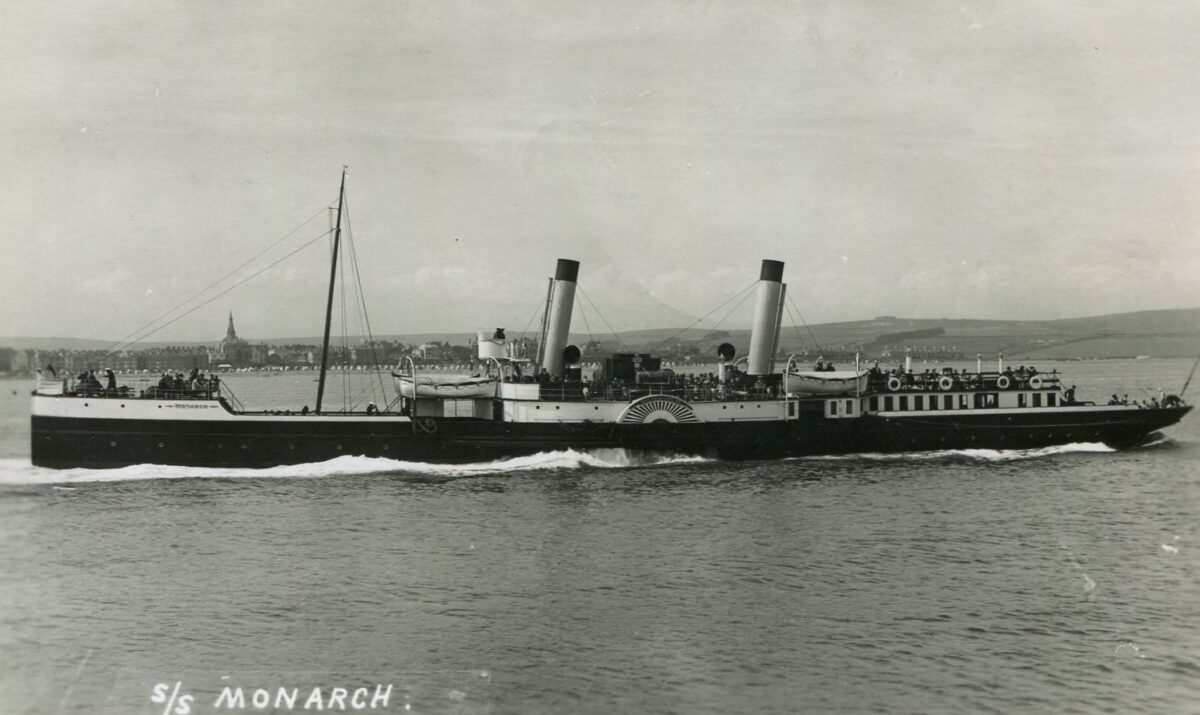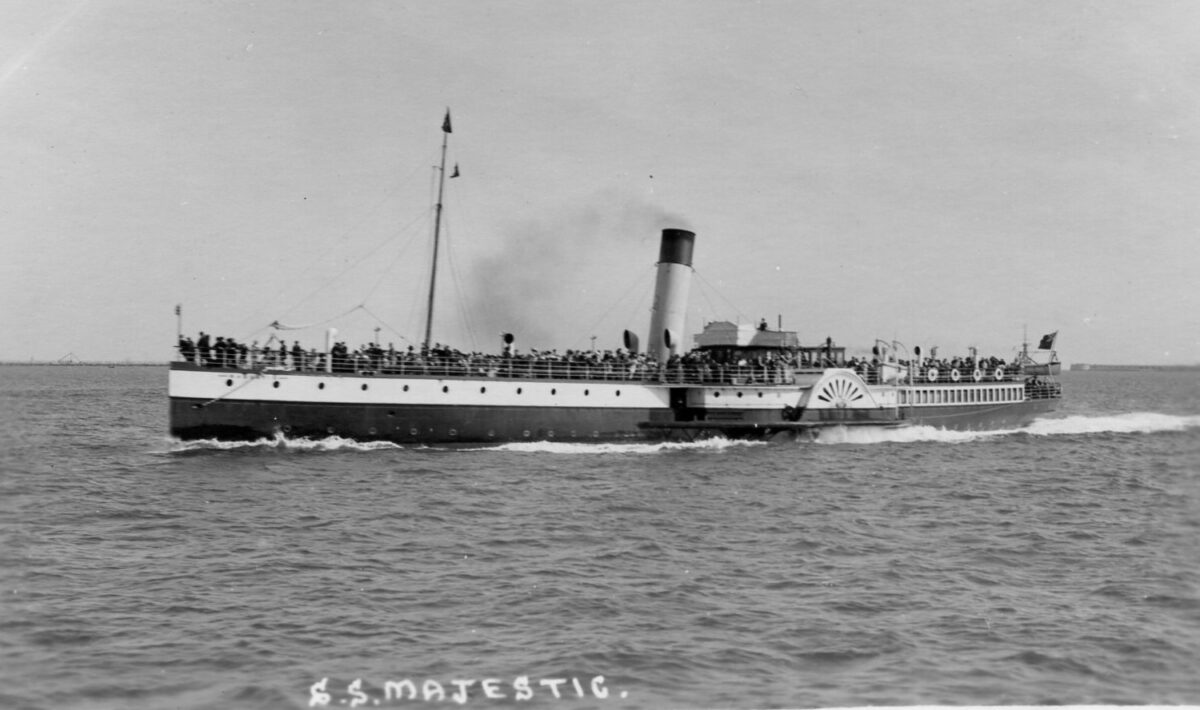
On Saturday 5th September 1914 Monarch was advertised for a trip leaving Bournemouth at 10.25am, Boscombe 10.40am and Swanage 11.25am for Weymouth where three hours ashore were offered with a return departure time at 3.30pm.
Following the declaration of war on 4th August the British holidaymaking industry fell into major decline with most people returning home or not setting out in the first place. However Cosens continued to offer trips from Bournemouth throughout August despite the closure of the Needles Channel, Spithead and Portland Harbour by the Government which restricted their destinations to the Isle of Wight piers of Ventnor and Shanklin in the east and Swanage, Lulworth, Weymouth and Torquay in the west.
Although Portland Harbour was also closed to all but naval shipping, Weymouth remained open so any trip there gave the opportunity for passengers to get a view of the fleet anchored in the Portland Roads. Much was made of seeing the build up of military activity with the Monarch’s trip on 5th September advertising “giving an opportunity of seeing the thousands of troops including infantry, artillery and cavalry billeted in the town likewise the captured Austrian and German ships now lying in the roadstead.”

So popular did they expect this trip to be that they advertised a second ship, Majestic, to run an afternoon cruise the same day leaving Bournemouth at 2.30pm, Boscombe 2.40pm and Swanage 3.20pm for Weymouth with a return departure time of 6pm.
Despite the gloom many people initially thought that the war would all be over by Christmas and in a growing spirit of jingoistic patriotism steamer notices now declared “Only Britishers allowed on Board the steamers”.
By the end of September, as the war took on a more serious tone, operators were told by Government to cease running their trips. By the middle of October the conflict had ground to a deadly halt with both sides in trenches and with neither going anywhere soon. Casualties began to rise exponentially as the bloody reality of war started to sink in and the death toll of countless young men sky-rocketed.
The 1914 season had started with the glowing optimism of an ever expanding and buoyant market for excursion paddle steamers set for profitability for years to come. By the end of the season operators nationwide began to realise that the game was up for their excursion trade. Casting around to try to find other work for their steamers in this suddenly changed market they started to lobby Government in the hope of finding some sort of war work for them.
Majestic was laid up in Poole after the 1914 season and lay ide for a couple of years until eventually she was taken up by the Admiralty for use as a minesweeper in the Mediterranean. She left the UK on Tuesday 18th July 1916, two years to the day since she had run a profitable trip from Bournemouth to the Spithead Naval pageant on 18th July 1914. She passed Gibraltar successfully but on 28th July 1916 started to take on water and sank.
Ironically, Capt St Barbe Rawle, who had commanded her from the time she was built in 1901 right up to the war died a couple of months before his ship’s demise. Aged only 53 he somehow fell into Newhaven Harbour on 6th May 1916 and was drowned.
Monarch had to wait a further year before being called up for war service as a minesweeper in the spring of 1917 under the new name HMS Monarchy.
Paddle steamer services would not return to Bournemouth until 1920.
Kingswear Castle returned to service in 2023 after the first part of a major rebuild which is designed to set her up for the next 25 years running on the River Dart. The Paddle Steamer Kingswear Castle Trust is now fund raising for the second phase of the rebuild. You can read more about the rebuilds and how you can help if you can here.
John Megoran
This article was first published on 5th September 2020.


